
views
- The Blue Badge scheme helps those with severe mobility problems who have difficulty using public transport to park close to where they need to go.
- The Blue Badge scheme provides special parking benefits, such as access to disabled parking spaces, the right to park on single and double yellow lines, and free parking in on-street metered parking spaces.
- The Blue Badge scheme is nationwide, but your county council handles applications and assessments.
Checking Your Eligibility for a Blue Badge

Check if you are automatically eligible for a Blue Badge. Some people are eligible for a Blue Badge automatically, whilst other people may be eligible at the discretion of their local county council. You are automatically eligible for a Blue Badge if you are aged 3 or over and one or more of the following applies to you: You receive the higher rate of the mobility component of the Disability Living Allowance (DLA) You receive Personal Independence Payment (PIP) because you can’t walk more than 50 metres (a score of 8 points or more under the ‘moving around’ activity of the mobility component) You are registered blind (severely sight impaired) You receive a War Pensioners’ Mobility Supplement You have received a lump sum benefit within tariff levels 1 to 8 of the Armed Forces and Reserve Forces (Compensation) Scheme and have been certified as having a permanent and substantial disability that causes inability to walk or very considerable difficulty in walking You receive the mobility component of PIP and have obtained 10 points specifically for descriptor E under the ‘planning and following journeys’ activity on the grounds that you are unable to undertake any journey because it would cause you overwhelming psychological distress
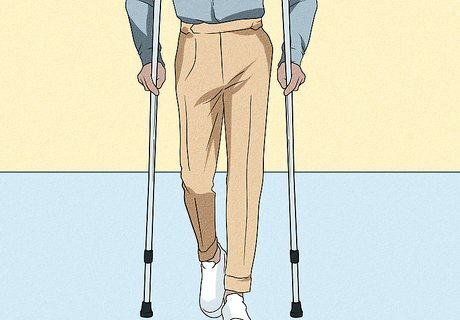
Check if you are eligible for a Blue Badge at your council's discretion if you're not automatically eligible. If you don't meet the criteria to be automatically eligible for a Blue Badge, you can still apply for one. Your local council will then decide if you will receive a badge, which may include an in-person mobility assessment with an occupational therapist or physiotherapist. You might be eligible for a Blue Badge if any of the following apply to you: You cannot walk at all You cannot walk without help from someone else or without using mobility aids You find walking very difficult due to pain, breathlessness, or the time it takes Walking is dangerous to your health and safety You have a life-limiting illness, which means you cannot walk or find walking very difficult and have an SR1 form You have a severe disability in both arms and drive regularly, but cannot operate pay-and-display parking machines You have a child under the age of 3 with a medical condition that means the child always needs to be accompanied by bulky medical equipment You have a child under the age of 3 with a medical condition that means the child must always be kept near a vehicle in case they need emergency medical treatment You are constantly a significant risk to yourself or others near vehicles, whether in traffic or in a car park You struggle severely to plan or follow a journey You find it difficult or impossible to control your actions and lack awareness of the impact you could have on others You regularly have intense and overwhelming responses to situations causing temporary loss of behavioural control You frequently become extremely anxious or fearful of public/open spaces
Getting Ready to Apply

Gather the required information. In order to apply for a Blue Badge, you'll need to provide various pieces of information. Make sure that you have the following information ready for your application: A proof of identity document, such as your birth or adoption certificate, passport, driver's license, marriage or civil partnership certificate, or divorce/dissolution certificate Proof of address documentation, such as recent council tax bills, recent letters from a government department such as the Department for Work and Pensions (DWP), driving license, or a recent letter from a school (if you are under 16) A recent passport-style head and shoulders digital photo Your national insurance number (if you have one) Contact details (phone number, email, and postal address)

Get proof of your disability benefits if you receive them. If you're automatically eligible for a Blue Badge because you receive certain disability-related benefits, you'll need to provide proof of the benefits that you receive. If you receive Personal Independence Payment (PIP), you'll need to know the scores from the mobility assessment and the award end date (if applicable) and provide the following pages of your PIP award letter: Entitlement to PIP (front page) Assessment scores (second-to-last page) Mobility scores (last page) If you receive Disability Living Allowance (DLA), you'll need to know which rate of the mobility component you receive and the end date of the award (if applicable) and provide the most recent DLA letter you've got from the DWP which shows your: Mobility rating Certificate of entitlement to DLA The date of the letter If you receive an award through the Armed Forces Compensation Scheme, you'll need to provide the most recent letter from the Ministry of Defence that you have, which clearly shows that you: Were injured in service on or after 6 April 2005 Have been awarded a benefit by the Armed Forces Compensation Scheme, with a lump sum payment within Tariffs 1 to 8 Are certified as having a permanent, substantial disability which causes inability to walk or very considerable difficulty in walking If you receive the War Pensioners' Mobility Supplement, you'll need to provide the most recent letter from the Ministry of Defence that you have, which clearly shows that you: Were injured in service before 6 April 2005 Receive a War Pensioners’ Mobility Supplement

Gather proof of your eligibility if you don't receive any of these benefits. If you don't receive benefits that make you automatically eligible for a Blue Badge, you'll need to provide evidence from professionals involved in your care, such as doctors or therapists, which demonstrate that you meet the eligibility criteria for a Blue Badge.
Submitting an Application Online if you Live in England, Scotland, or Wales

Visit the gov.uk application site at https://www.gov.uk/apply-blue-badge. This link brings you to the application main page for England, Scotland, and Wales.
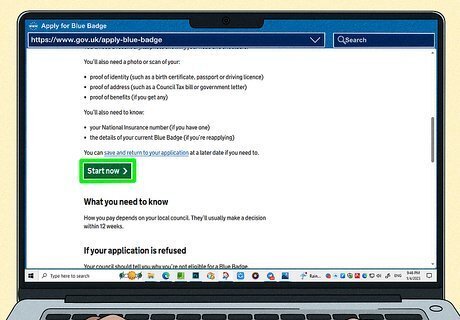
Click on Start Now >. This will bring you into the application system.

Complete the application form. You will first be asked for some of your personal information, including your postcode and date of birth. You will then be asked a set of multiple-choice questions. Next, you'll need to fill in some longer answers about your health condition(s), information about the difficulties you have with moving around, information about the professionals involved in your care, and any medication or other treatments you are receiving now or in the future. Following the instructions on the site, progress through the pages of the form and provide the application details that you prepared.
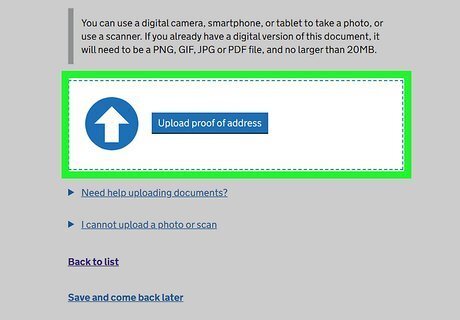
Upload your supporting evidence. You will be given the opportunity to upload evidence which proves that you are eligible for a Blue Badge. The application form will provide spaces for uploading your documents in image or PDF form. Your evidence should be from professionals, such as a GP, a specialist doctor, or a therapist, and should clearly show why you have difficulties moving around and getting to where you need to go.
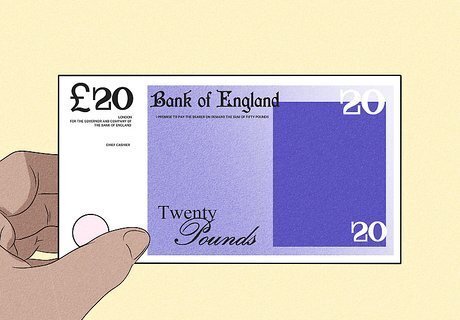
Pay the application fee. The application fee is set by your local council; a Blue Badge costs up to £10 in England and £20 in Scotland. There is no application fee in Wales. If your application isn't successful, you'll get a full refund of this cost.
Submitting an Application Online if you Live in Northern Ireland
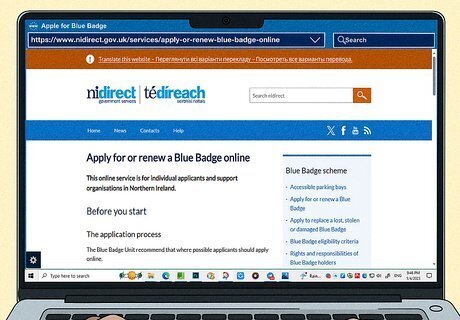
Visit the nidirect website at https://www.nidirect.gov.uk/services/apply-or-renew-blue-badge-online. Click on Apply for or renew your Blue Badge > to enter the application system.
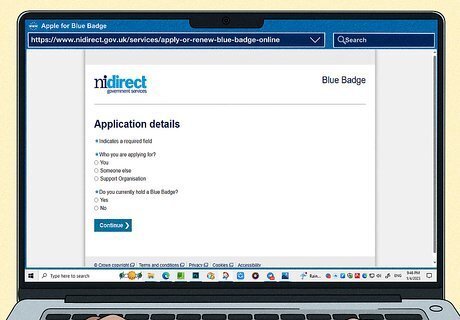
Complete the application form. You will first be asked for some of your personal information, including your postcode and date of birth. You will then be asked a set of multiple-choice questions. Next, you'll need to fill in some longer answers about your health condition(s), information about the difficulties you have with moving around, information about the professionals involved in your care, and any medication or other treatments you are receiving now or in the future. Following the instructions on the site, progress through the pages of the form and provide the application details that you prepared.

Upload your supporting evidence. You will be given the opportunity to upload evidence which proves that you are eligible for a Blue Badge. The application form will provide spaces for uploading your documents in image or PDF form. Your evidence should be from professionals, such as a GP, a specialist doctor, or a therapist, and should clearly show why you have difficulties moving around and getting to where you need to go.
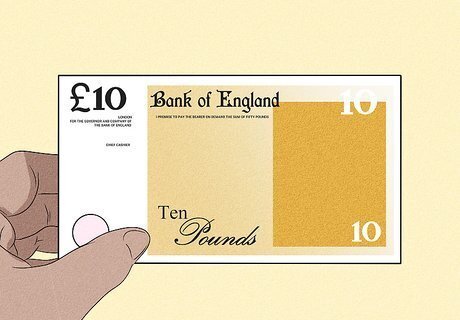
Pay the application fee. The application fee for applicants in Northern Ireland is £10. You'll get a full refund if your application is unsuccessful.
Getting Help with Your Application
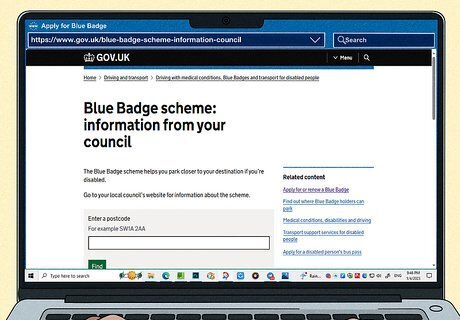
Contact your local council. If you need support to apply for a Blue Badge or have any questions about how to apply, you can contact your local county council. You can use the GOV.UK website to check your local council's details at https://www.gov.uk/blue-badge-scheme-information-council
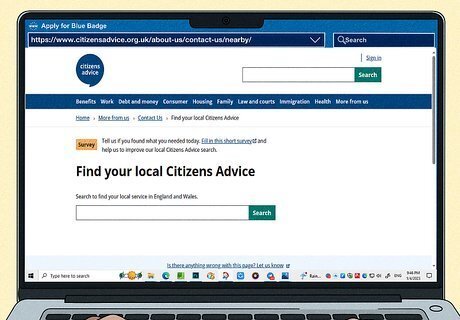
Get help from Citizens Advice. Your local Citizens Advice service may be able to provide you with information and support regarding your application. You can use the Citizens Advice website to find your local service at https://www.citizensadvice.org.uk/about-us/contact-us/nearby/.

Seek help from other professionals. If you have a social worker, they may be able to provide support with completing your application or give you information about other people can help. Similarly, health professionals such as your doctor, specialist nurse, or therapist may be able to help you or give you the details of people or organisations that can.
After Submitting Your Application
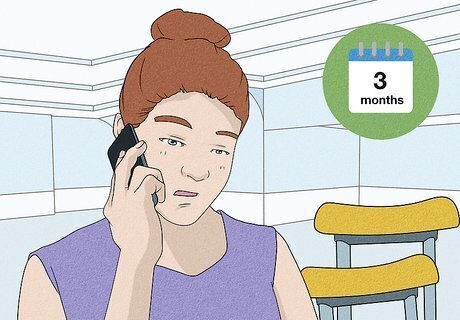
Be prepared to wait. It can take a long time for your local council to review your application- up to 3 months in some cases. You should get in contact with your local council if you haven't received a decision or any further information within 6-8 weeks of submitting your application.
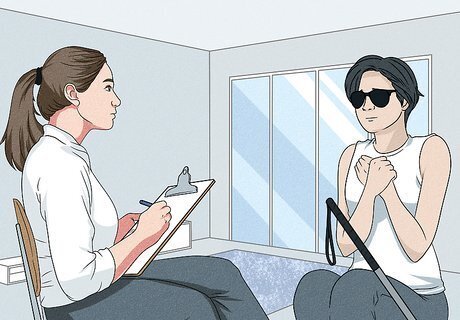
Attend a mobility assessment if required. Your local council may ask you to attend a mobility assessment with a health professional, such as an occupational therapist or a physiotherapist, to help them decide if you should receive a Blue Badge. If asked, schedule and appointment with your local council and a medical center.

Provide additional information if requested. Your council may sometimes need extra information to assess your application, such as extra evidence from professionals involved in your care, or they might want to speak to you. Your council will inform you in writing if they need more information.

Receive your Blue Badge if your application is successful. If your application is successful, you should receive: A Blue Badge A time clock A leaflet telling you about your rights and responsibilities when using a Blue Badge, which you can also find online at https://www.gov.uk/government/publications/the-blue-badge-scheme-rights-and-responsibilities-in-england.
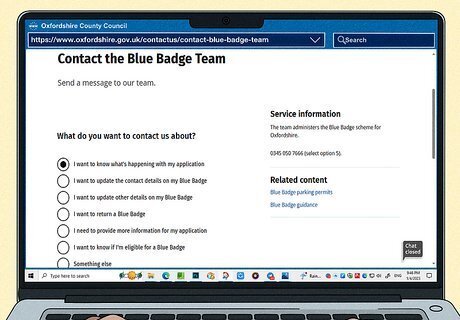
Consider appealing if your application is unsuccessful. If your application is unsuccessful and you disagree with the council's decision, you can appeal. Your Blue Badge page on your local council's website should tell you how to submit an appeal.
Using Your Blue Badge
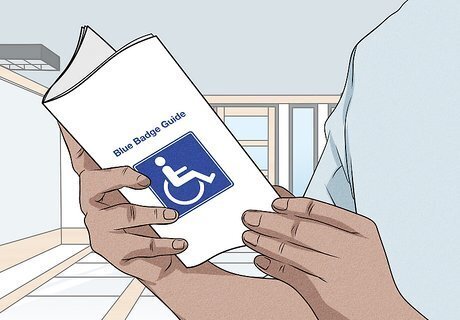
Make sure you understand your rights and responsibilities under the Blue Badge scheme. When you received your Blue Badge, you should have received a booklet telling you where and how you can use your Blue Badge, and some rules about things you can't do.
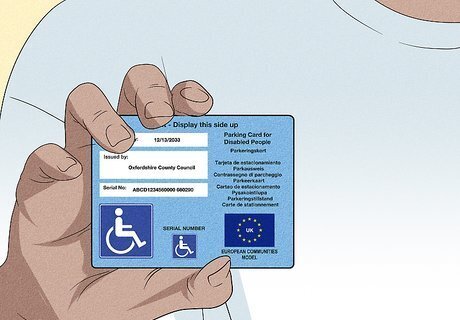
Ensure that your Blue Badge is only used for your benefit. The badge is for your use and benefit only. It must only be displayed if you are traveling in the vehicle as a driver or passenger, or if someone is collecting you or dropping you off and needs to park at the place where you are being collected or dropped off. Don’t allow other people to use the badge to do something on your behalf, such as shopping or collecting something for you. You must never give the badge to friends or family to allow them to park for free, even if they are visiting you. You should not use the badge to allow non-disabled people to take advantage of the benefits while you sit in the car. It is a crime to misuse your Blue Badge or allow someone else to misuse it, you could be fined up to £1,000 and have your Badge confiscated.
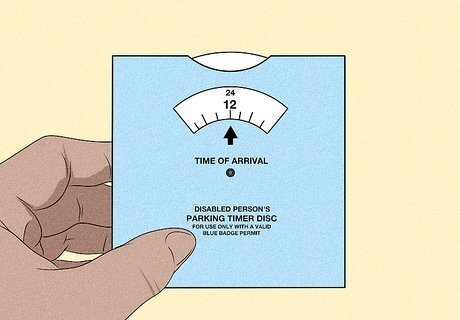
Understand when you need to use your time clock. When you park on yellow lines or in other places where there is a time restriction, you need to display the blue parking clock to show your time of arrival. The clock should be set to show the quarter hour period during which you arrived. If you need to use a parking clock, you must display it on the vehicle’s dashboard so that the time can be seen clearly through the front windscreen.
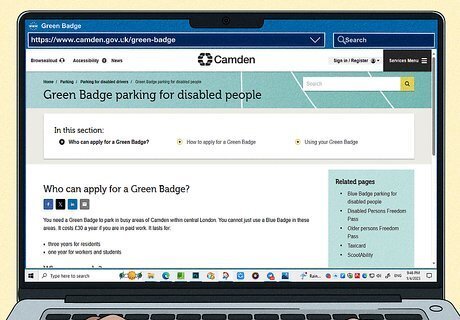
Know how the Blue Badge system is different in central London. In central London, parking is very limited, so certain parts of the Blue Badge scheme don't apply. 4 boroughs of the city operate specific permit systems which give full Blue Badge rights to people who live, work, or study in the borough. You can access the forms and information on your borough through the following links: London Borough of Camden - Green Badge scheme City of London - Red Badge scheme City of Westminster - White Badge scheme Royal Borough of Kensington and Chelsea - Purple Badge scheme




















Comments
0 comment